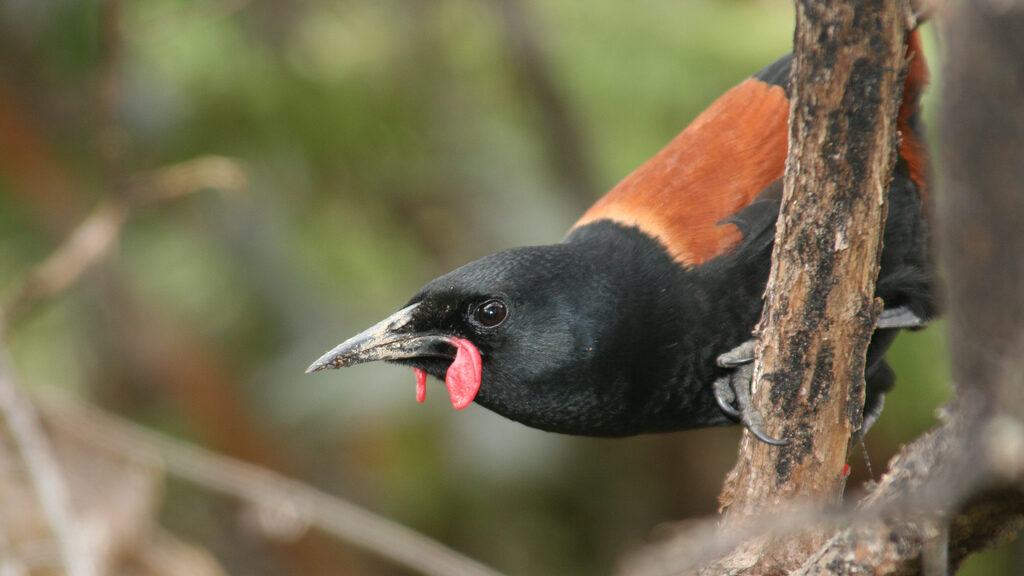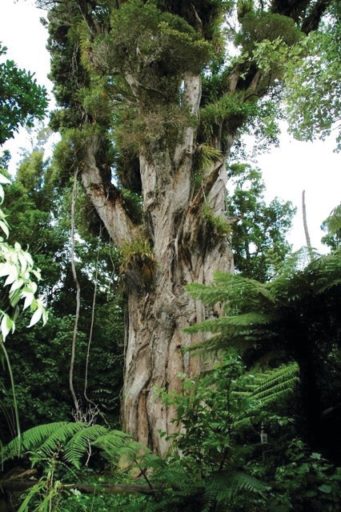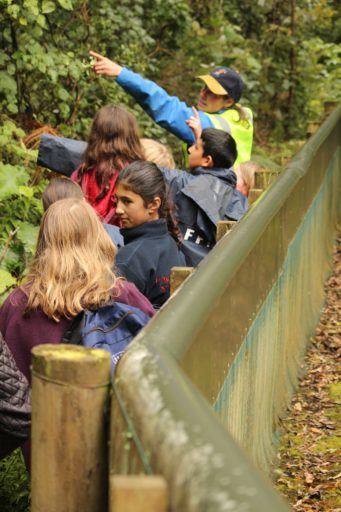Bushy Park-Tarapuruhi Forest Sanctuary and Historic Homestead lies 25km north of Whanganui and has a long history of community-led conservation, going back to the early 1960s.

“It’s had its ups and downs,” according to Mandy Brooke who has managed the Sanctuary since 2014, “but it’s an amazing example of long-term conservation. The forest is a rare example of temperate lowland forest with mature broadleaf, podocarp, tawa, pukatea and large trees of rimu and northern rata. Historically it had minimal logging and from the early/mid 1900s it was fenced from stock.”
Since 2005, the forest has been fenced from predators too. In fact it has a double fence.
“There’s a 4.7km Main fence around the sanctuary and a 700 metre secondary rodent fence internally that annexes the driveway and buildings,” Mandy explains. “The historic Edwardian stables and homestead are inside the Main fence with a double gate excluder. There’s a lot of traffic into the Sanctuary, making it a high risk, hence the need for the secondary internal fence.”

Bushy Park – Tarapuruhi covers an area of 98 hectares in total. Some of that land comprises the homestead gardens and paddocks with around 89 hectares in forest. Balancing that mix is both a strength and challenge of Bushy Park, Mandy believes.
“The land was owned by G.F. Moore who built the homestead and farmed a large area,” says Mandy. “He died in 1962 and gifted the homestead and forest to Forest & Bird. Forest and Bird still own the forest, but Bushy Park Homestead and Sanctuary has been run by the local Bushy Park Trust since 1995. It sits within the rohe of Nga Rauru Iwi and we have a strengthening relationship with the Iwi. The name Tarapuruhi is translated to mean ‘place of abundant bird life’”
The birdlife at Bushy Park is predominantly native species, further enriched by reintroductions of North Island robins in 2005 (the year the fence was erected), North Island saddleback/tīeke in 2006 and stitchbird/hihi in 2013.
“Kevin Parker (reintroduction expert) wrote a reintroduction plan for Bushy Park recently,” says Mandy. “Robins and tieke have been hugely successful – so much so that some have been transferred to other sanctuaries – and the hihi have been breeding successfully here. There are around 600 North Island robins, so it’s a very dense population now.”
A halo project is being established around Bushy Park to help protect birds from predators if they venture out beyond the safety of the fence.
“Tieke have been seen in neighbouring properties ,” says Mandy, “And the robins travel out from small block to small block.”
But birds aren’t the only native wildlife that’s special at Bushy Park.
“We get a lot of Massey students and researchers on site because Bushy Park is accessible and relatively small, so a good scale for some research projects,” says Mandy.
One of those researchers is a Japanese expert on snails.
“Bushy Park has a really good assortment of micro-snails,” says Mandy. “They’re pin-head sized with beautiful patterns when you look at them under the microscope.”
The Sanctuary also has 2000 school students visiting per year.
“Education and research is really important and we work to support that with volunteer educators and guides,” says Mandy. “We also have regular volunteer sessions every Tuesday and Thursday as well as volunteers who feed the hihi supplementary sugar-water every 3 days and monitor hihi nesting. There’s a massive volunteer energy – about 500 hours per month, although it varies a bit.”
Maintaining the predator fence is also ongoing.

“Fence maintenance is a key part of our work,” says Mandy. “The fence is hugely successful in the level of protection it gives to birds, with rata and understorey recovery occurring too. The difference between having a predator programme and the level of protection from a fence is notable. But we need to check and maintain the fence and gates. We have 4-5 full forest audits per year with predator dogs to check there haven’t been any incursions.”
Bushy Park has faced some predator challenges in the past.
“It’s not always easy for small sanctuaries that are community-led,” says Mandy. “There have been times when the funding was not there for consistent staff support and the same level of monitoring. Because of that, there were issues with rodents and rats had to be re-eradicated, but it’s now much more stable. We know the risk is there and are very clear about processes.”
Mice are still present at Bushy Park, however.
“They’ve never been eradicated,” Mandy says. “It wasn’t a possible option and mouse numbers have gone sky high. For the last 3 years we’ve had a mid-winter knock-down but they can bounce up to very high densities.”
Recently the team have modified their mouse strategy.
“In the last year, at the end of the knock-down, we’ve continued with trapping where mice have been found in audits,” says Mandy. “They’re often found in clusters and we’ve been able to maintain less than 10% density so far, whereas previously density was 70-90%. So it looks do-able. There are 480 tunnels across the forest and our most recent mouse density at the end of the summer was 8.2%.”
The huge ongoing work programme at Bushy Park also benefits from the support of projects by other volunteer groups.
“Whanganui North Rotary have done significant track upgrades and they built our outdoor classroom,” says Mandy. “We can fit around 70 under the shade sail alongside the forest. They made macrocarpa seating too. The outdoor classroom is also used as a picnic spot with robins flitting around, hihi on the ground and kereru flying underneath the sail.”
Other Rotary projects around the forest have included a wetlands boardwalk and amphitheatre.
“The historic buildings are a big task to maintain,” says Mandy. “They’ve recently been re-roofed and repainted. It’s been a lot of work in the last few years bringing them back up to scratch and making Bushy Park a great destination.”
Whanganui Museum and the Sargeant Gallery are also supporters of the Sanctuary.
“We also get considerable support from Iwi, Department of Conservation, Forest & Bird and Horizons Regional Council,” says Mandy. “Sanctuaries need strong partnerships. Partners are the key in pulling through.”

